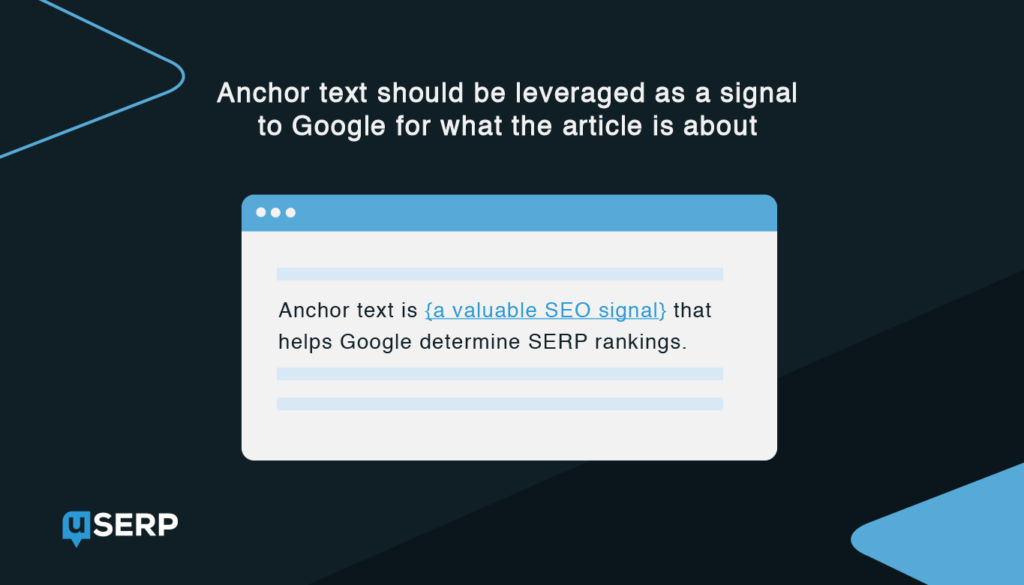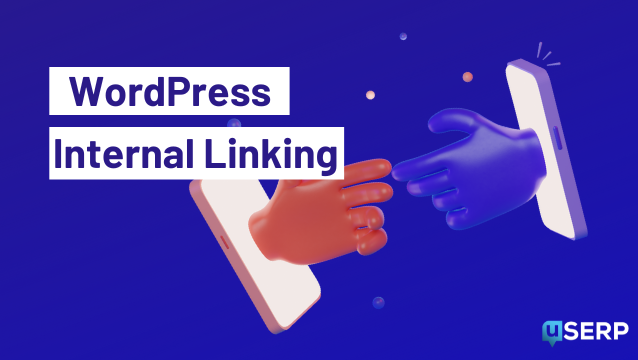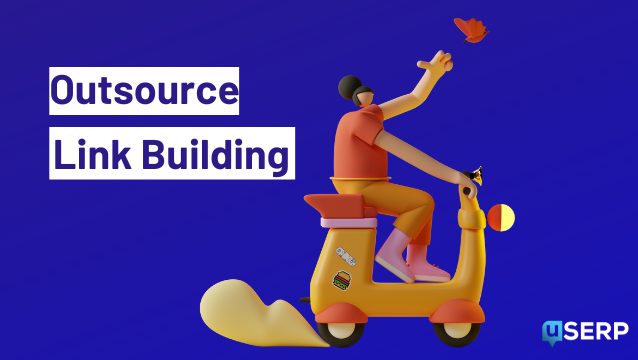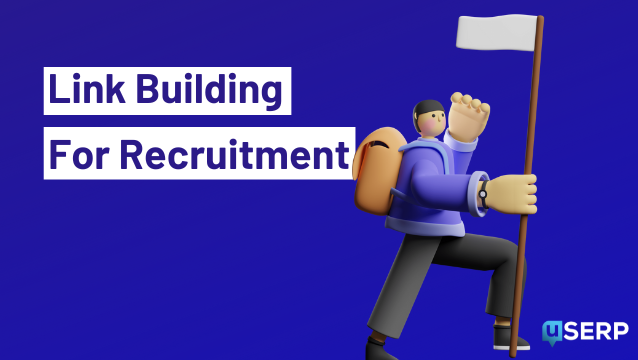Link building is an SEO cornerstone. But, SEO is getting too complex.
Even if you built your website, you’re not going to be able to optimize everything.
Not by yourself, that is.
Technical aspects are getting more granular. Content is becoming a major time investment. Seemingly small errors can negate even simple on-site optimization efforts,
So if you have to pick one thing to improve site authority, what would be the best route forward?
That answer is simple: Link Building.
Link building has been around since day one of SEO, but it’s gotten better… and easier….and safer (read: no penalties when done right). This guide will teach you the basics of link building, why it’s important, and how you can get started today.
Table of Contents
What is Link Building?
Link building is the strategic process of building backlinks (inbound links from other sites) to a website. Its purpose is to positively impact your site’s optimization in a search engine’s evaluation process. Simply put, it boosts your chances of ranking well in search results.
In other words, it’s a foundational part of your website’s off-page SEO.
When considered en masse, all of the links to your site are called your link profile. You want a varied, strong link profile that will impress search engines like Google and help you rank well. You can explore your link profile with a proper backlink analysis.
While we will never know the exact weight of backlinks in Google’s algorithm, we have some educated guesses.
Google has explicitly stated that both content and backlinks are two of the most important ranking factors today:
While not clear on the exact percentage, and tied with content. That’s still a significant ranking factor.
It’s also pretty scary if you’ve been neglecting link building.
If your goal is to get Google to notice your website (and it should be), you need backlinks.
Full stop.
A whopping 99.2% of top-ranking pages have at least one backlink pointing to the site — and 77.8% had an inbound link pointing to that exact page.
Keep in mind that the results of link building are a symbiotic relationship to your overall SEO.
Think of link building as a critical step in a complex process. Without it, it’s hard to continue said process and see any form of results. Long term, it can have a major impact, but only if you do it correctly.
Don’t worry; we’ll show you how!
But before we talk about techniques, you need a better understanding of the benefits of link building.
Yes, content, on-page optimization, and information architecture are big factors, but there’s more at play here.
Let’s take a look.
What Are The Benefits of Link Building?
I’ve already shown you that link building and organic business growth through SEO go hand in hand.
But SEO is just a means to an end. What good is a high rank if you don’t get traffic, leads, and customers?
Link building can get you all of that as part of effective online marketing.
There’s plenty of data to prove it, too.
The ultimate goal here isn’t traffic. It’s sales.
And when you get your formula right, backlinks can lead to sales.
Powerful, right?
Your mileage may vary, but the potential is there.
And all these studies don’t even scratch the surface of how backlinks can improve brand awareness and your professional networking.
To learn more about why backlinks matter, check out 41 Link Building Statistics and Trends to Know for 2020-2021.
Before we get to the link building techniques you should know, there’s one last thing to be aware of.
Not all backlinks are the same.
What Is The Best Type of Link?
Not all inbound links are equal.
You should know that Google cares about how you label links in the HTML of websites that point to your website.
There are currently four different “types” of link values to be aware of:
If you know about SEO, you’ve probably heard about White Hat, Black Hat, and Grey Hat SEO.
Each of these approaches link building differently — and will try to explain quality in a way that suits them best.
Depending on the type of SEO expert you’re working with, they’ll tell you a different story about the efficacy of each type of link.
Black hats will tell you they’re all the same.
Grey hats will tell you that everything but rel=”nofollow” is worth pursuing.
White hats will tell you to go for clean and clear values, in other words, followed links without a designated value:
Who’s right?
We lean toward white hats, but Nofollow links shouldn’t be completely disregarded.
Recently, Google announced huge changes to the classification of nofollow links. Previously, nofollow links passed zero pagerank (link juice) and were simply not followed by search engine crawlers.
Now, Google will make the choice whether or not to pass ranking credit to nofollow links:
When nofollow was introduced, Google would not count any link marked this way as a signal to use within our search algorithms. This has now changed. All the link attributes — sponsored, UGC and nofollow — are treated as hints about which links to consider or exclude within Search. We’ll use these hints — along with other signals — as a way to better understand how to appropriately analyze and use links within our systems.
With that being said, nofollow links shouldn’t be discredited. They are extremely valuable to the overall health of your link profile, too.
Another common issue that comes along with the “best type of link” is anchor text:

Anchor text are the words that appear on a web page that hyperlink from one page to the next. Instead of messy web addresses, anchor text makes everything look neat.
There are a wide variety of anchor text options that you can use when building backlinks, but the short version is that you want a blend of all types.
The exact blend of anchor texts that works for you will take some experimentation as you develop a more complex strategy.
And of course, you should always try to acquire a relevant link.
Incoming links that don’t speak to your brand aren’t going to help Google understand your site any better. In fact, it may end up hurting you.
That means links from relevant websites with an appropriate anchor text.
Now let’s explore some techniques that can help you start building a backlink profile.
What are the Best Link Building Techniques?
There are dozens of methods you can use to build links to your website. There are also agencies and backlink building services that you can outsource too.
We’ll cut through the noise and show you concise, simple methods that allow you to build a high quality link and stay away from poor links.
Let’s dig in.
Link Building Technique #1: Traditional Link Building
Traditional link building techniques are your “run of the mill,” normalized, industry-standard practices that most everyone will do.
These techniques may not give your SEO a leg up, but not utilizing these techniques will surely hurt you.
Why?
Because your competitors are almost certainly using these techniques.
You need to level the playing field before you can dominate it.
Here are three traditional ways to build links that you should tackle first:
Directory Links
Directory links are backlinks from websites whose function is to help customers find businesses in a specific city or niche.
That’s a fancy way to say — they’re links from sites like Yelp or your social media pages.
And yes, I’m not kidding when it comes to social media. You do technically get backlinks from social media, although they’re hardly meaningful to your SEO, and always nofollowed.
According to Jack from Social Shepherd, such links indirectly contribute to SEO ranking increasing brand exposure.
These links fall squarely into the traditional category because you should probably have listings on sites like this anyway to help boost your Local SEO and branding.
Here’s a quick list of common sites to get you started:
- Google My Business
- Yelp
- Yellowpages.com
- Local.com
- Yahoo Local
There are plenty more, and you likely have a directory for your specific industry as well.
Get these links for a quick win, but don’t put too much stock in them in terms of ranking boosts. Think of them as laying the groundwork for your branding and authority.
Make sure to keep yourself updated on the latest social media updates, especially new Facebook features.
Guest Blogging
Guest posting is a good opportunity to build relationships and share your expertise with a new audience.
You can also get backlinks pretty easily this way, so add it to your backlink strategy.
Start working through your network to find blogging opportunities that can benefit another company’s audience. Pitch your article, and write valuable content.
Use a CRM software to have a single source of interactions with media to store all the story ideas you’ve pitched before and avoid sending any repetitive content or re-contacting rejected pitches.
In some cases, you can put a link in your blog copy.
But at the very least, you can get a link to your site in the author bio of your guest post. It’s considered a courtesy by most marketing professionals, so don’t be afraid to insist if you get pushback.
In short, guest blogging is another easy link opportunity from something you should already be doing.
However, be aware that scaling this on your own is potentially a “link scheme” in the eyes of Google.
Guest blogging for links works, but when you’ve contributed to 100 websites with the same recycled content, pointing to the same link, with the same anchor…you get the idea.
Press Releases
You might think that press releases are for fancy law firms, government agencies, or businesses who are trying to work their way into the news cycle.
But they’re a good way to win some foundational backlinks.
Now, keep in mind that many of these will almost exclusively be Nofollow, but occasionally you’ll get a followed link in the crowd.
At the very least, you’ll cast a wide net and increase your brand recognition, building passive backlinks in the background.
For example, this press release for a small local business got 114 backlinks from a single press release:
While these links may have minimal impact on SEO, it’s a common practice that hasn’t completely gone away in SEO companies. Your mileage may vary, but it’s worth considering.
One important thing to keep in mind, currently we are seeing a rise in cases of SEO spam (here hackers infect websites with malware and put hidden links in the source code of the site.) To overcome this, penetration testing is required.
#2: Quick Link Building Tactics
Now that we’ve looked at some traditional methods let’s start exploring some quick wins.
These are backlinks that may not be obvious but can yield some impressively quick results.
They’re great for those who already have an established site but want to upgrade their SEO efforts, and make the graphs in their rank tracking software look like a hockey stick.
Here’s what you need to know:
Q&A Platform Links
Question-and-Answer platforms have taken off in the last decade.
The premise is simple.
Users post questions to other users, and then answers are submitted. The best answers get voted up, and bad answers get voted down.
How does this provide backlinks?
It provides the opportunity to share your expertise. A well-written, well-sourced answer can often receive thousands of “upvotes,” which only increases your answer’s visibility.
And when you use resources, graphics, and studies that you create, that’s an opportunity for a natural link to yourself from these Q&A websites.
Here’s one example from Quora:
Other popular sites include:
- Answers.Yahoo.com
- Stackoverflow.com
- Slant.co
There are others, but you’ll want to start on popular sites first.
Do they work? To an extent, yes, but overdo this link building tactic and you could face spam issues.
Broken Link Building
The internet is always changing.
Just think of how many pages you’ve added or removed on your site. Then remember that there are more than 1.8 billion active websites.
Sometimes, things break.
And when they do, that’s an opportunity for link building.
Broken links are old links that point to pages that are no longer active and they’re great linking opportunities.
For this method, you’ll need a paid Ahrefs account. Specifically, you’ll need their Content Explorer tool.
Start by searching for a topic in your niche.
Then, set the filter highlighted below to the “Only broken” option. It’s not a bad idea to filter for higher domain ratings too.
The result is a list that will look like this:
Every single one of these pages has a broken link that’s related to your searched-for niche.
And that’s an opportunity.
In many cases, you may have some content that can replace these broken links.
You can also create content specifically to try to replace a broken link.
Then, all you have to do is find a way to pitch your content/link to someone who works on the site. Many times, you can find people through LinkedIn or an email address listed on their site. You can also use an email ID finder to ease the email lookup process and reach out to the right person to get the job done.
You may not get every link, but people don’t like broken links on their site. Many will be thankful for your proactive approach and will happily give you a link.
PS: For your site, here’s how you can fix broken links on WordPress.
Unlinked Brand Mentions
The final quick win to be aware of is the unlinked brand mentions:
If your business is well known, someone may have mentioned you on the web.
But if they don’t provide a link, there’s no way to get traffic or improve SEO through that mention.
If you can find these unlinked mentions and ask for a link, it’s possible to get a few.
Again, this method will likely require a paid SEO tool. I’ll show you how to do it through Ahrefs.
Go to the Ahrefs content explorer and put in your brand name. You can also include a modifier to exclude your domain from the results (for example, “-ahrefs.com”).
Then, apply a filter that highlights unlinked instances to your domain:
The results will show any unlinked mentions.
From there, you just have to pitch the website owner about adding a hyperlink to your site.
You may not get them all, but the ones you win are the definition of low hanging fruit.
#3: Methods to Earn Backlinks For Your Website
Link earning is one of the most tried and true link building methods.
In short, it’s just creating noteworthy content that people want to share. It goes hand in hand with your content marketing.
Valuable content naturally invites links, and you can proactively create and share content that others will want to link to.
You can look at it as an advanced form of the traditional “guest blogging” approach, but you’re creating original content that makes it easy to bring your work into the conversation.
Data-Driven Studies and Case Studies
Content writers and business owners are always looking for authoritative data on a topic.
Sharing your experiences — good and bad — and the data behind them is a great way to invite links. Here’s a simple example from one recent Codeless campaign:
Will all of these efforts work for link building? No.
But case studies are a valuable asset for your marketing and sales anyway. Links are an added benefit to shoot for, and we highly recommend doing so.
The upsides with data-driven studies for link building are huge.
Don’t believe us? Check out this study Orbit Media does each year:
That’s nearly 2,000 unique referring domains and 5,600+ backlinks for a single piece of great content.
Yeah, that’s worth it.
Infographics
Similar to case studies and data-driven studies, infographics are a great way to increase your brand’s visibility and win backlinks organically.
Infographics are nothing new, but make sure you’re hitting a few essentials:
- Choose a sought-after topic
- Create a visually engaging way to inform your audience
- Share it
- Keep it updated
Here’s a great example from Hubspot:
This infographic has been around for a few years and has a solid 66 current backlinks.
Like most of these, your mileage may vary.
But if you don’t have the content, you won’t get any links.
So start brainstorming great infographic ideas!
HARO – Help A Reporter Out
HARO stands for “Help A Reporter Out,” and it’s a very popular method of acquiring backlinks these days.
The premise is simple: find a niche topic that doesn’t have much coverage and reach out to experts in that industry to get quotations relevant to your topic.
I’ve done this countless times, landing high profile features on Venngage, Forbes, Inc, and hundreds more:
This has backlinking potential for everyone involved, so there are no losers. Experts get a link to their site, and reporters (or content writers) have access to insider quotes that can help them speak authoritatively on a topic.
Win-win.
Tools
Another increasingly common way to win backlinks is to provide helpful tools to anyone who needs them.
Don’t just take my word for it. Neil Patel bought UberSuggest and changed his blogging strategy over this method.
And that (free) tool has a casual 153k backlinks.
We can’t all be Neil, but the premise he’s relying on is sound.
Helpful tools will gain notoriety.
Notoriety invites backlinks — and free press.
And it doesn’t even have to be a sophisticated tool.
Ridiculously simple keyword mixer tools can provide great success. Calculators are also great.
The potential is limitless, and all it takes is some coding to win some backlinks to your site.
Backlink Technique #4: Paid Links
Paid link building is a tricky subject.
Buying links is against Google’s Webmaster Guidelines. But, even Google has been caught buying links…more than a few times.
So, what exactly quantifies a paid link? Have you ever been emailed asking if you’d be interested in buying links on X, Y, and Z sites?
Those are direct paid links. You are directly paying someone to add a link on a specific website.
But, what about link building services? And digital PR agencies?
These efforts aren’t direct, one-to-one link buying. Instead, it’s white-hat outreach to naturally add value with your content.
There are a few paid link methods that can help increase traffic and build your brand when done correctly and used carefully.
Sponsored Blogs, Product Reviews, and Influencers
Sponsored blogs, product reviews, and influencer outreach are all different ways of saying, “Paying someone to try and review your product/service.”
It’s a common practice these days. You can hardly open Instagram or Pinterest without being bombarded with influencers.
But the practice started on blogs, and that ecosystem is very much alive and well.
Here’s a basic example of one such post:
It’s a basic formula. You reach out to a blogger, pay them to review your product (or give them a free sample), and they provide their opinion to their audience.
They also provide a link back to your website if anyone wants to learn more about you:
Just make sure you do this correctly.
In years past, Google recommended the rel=”nofollow” tag for these links.
These days, you have the rel=”sponsored” tag. Use it.
If you leave it as a Dofollow, you’re likely to get penalized when Google finds out it’s a paid link.
It’s not worth the risk — disclose your sponsored links!
Scholarship Pages
The other way to “pay” for links to host a scholarship.
Yes, really.
It’s sort of convoluted to call this a “paid” link, but you are, in essence, paying for links — often from scholarship search engines and listicles.
Your money is going to a college student, so the “paid” aspect is a bit of a grey area.
A great example of this comes from Starbucks. Here’s their website’s scholarship page:
A quick look in Ahrefs shows that this page has more than 2,000 backlinks. Not too shabby.
If you provide a scholarship, you’re likely to get more than a few backlinks.
If your brand is well known and the award amount is substantial, you’re almost guaranteed links once the word gets out.
Should you give away a scholarship just for backlinks?
Probably not.
Customers can view this as self-serving and manipulative, but it’s an option.
Our advice: do it carefully and at your own risk.
Link Building Technique #5: Outreach
Outreach is worth mentioning as a technique on its own, as it’s quickly becoming an industry norm.
Link outreach is when you find people in your industry who might be interested in your business and content.
Instead of trying for one-off blog posts or spammy email exchanges, you focus on building relationships with them to find opportunities that promote link building or link building services to your content.
It’s a more in-depth approach that requires identifying the right people, pitching them, and then following up with long-term relationship efforts.
It’s the ultimate version of network building that coincides with link building. To do this well:
- Build great content
- Focus on strong relationships
- Don’t be afraid to give and take
When done right, link outreach can become an asset to your personal brand building, career, and future thought leadership efforts.
And the data backs this.
79% of publishers found value in pitches from link outreach efforts they received.
And thanks to developments in outreach software platforms, it’s easier than ever to scale your outreach.
It’s our preferred method, and it’s what we try to lean on at uSERP. One relationship can build hundreds of links — take it from our personal experience.
But now that you know some valuable link building techniques, there’s one last question we want to answer.
What Is the Best Link Building Strategy?
You know why you need backlinks.
You know how to get them.
But what’s the best link building strategy?
It’s surprisingly simple.
The best link building strategy has two elements:
- It builds links at a reasonable, steady pace.
- It builds quality links.
That’s it.
As we’ve seen throughout, quality is key when you’re building links. High domain authority, dofollow links from reputable sites will always be more beneficial.
But why focus on a steady pace?
Because quick acquisition can throw up red flags for Google.
This principle is called link velocity.
Bad link velocity is instantly noticeable, and it tells Google you’re trying to manipulate your site’s ranking without focusing on improving your content.
So keep your link velocity in mind.
Paired with the quality-oriented techniques I’ve taught you, you’ll be on your way to improved SEO, traffic, and revenue.
Conclusion
Backlinks are vital. They boost SEO, traffic, leads, and customers.
And Google has given clear direction on which links you should aim for.
Using the five techniques in this post, you can start building a strong link profile.
Build links with traditional methods, go for the quick wins, earn links with top-notch content, stay away from paid links, and leverage relationships through outreach. Finally, keep things slow and steady.
When you put it all together, you have a winning strategy.
- The State of Backlinks for SEO in 2024: What 800+ SEOs Think About Link Building - January 10, 2024
- Why You Should Accept External Contributors for Your Blog: 7 Benefits of Collaborative Content - October 18, 2023
- 10 WordPress Image Optimization Plugins for a Faster Website - January 25, 2023








